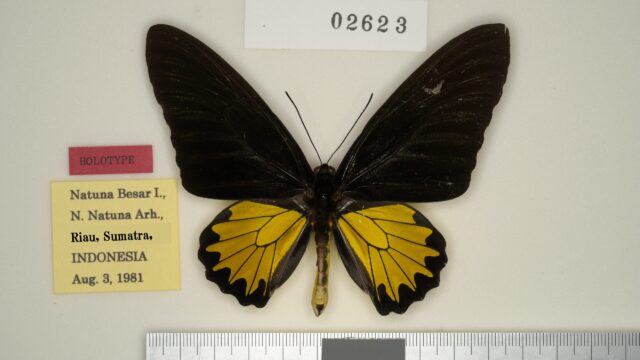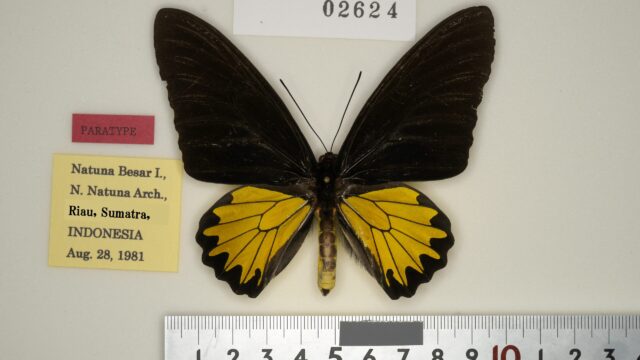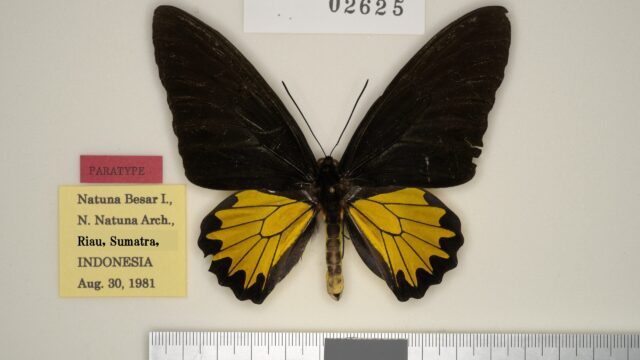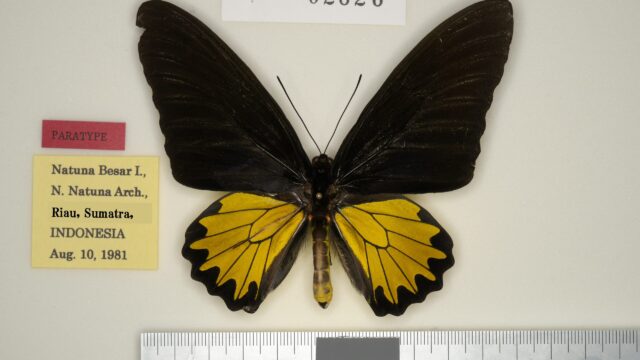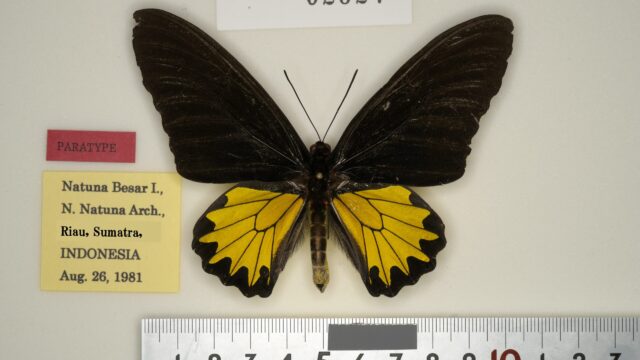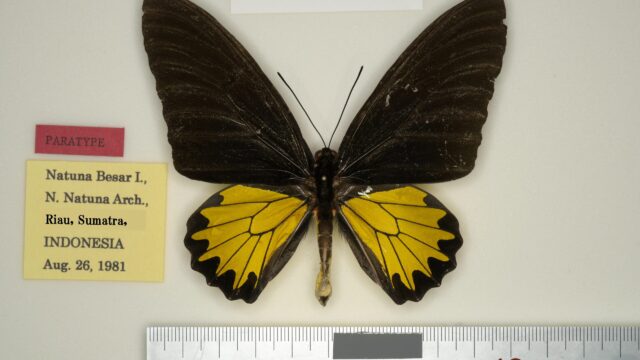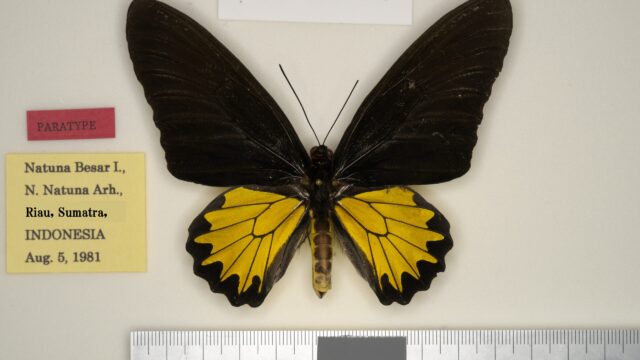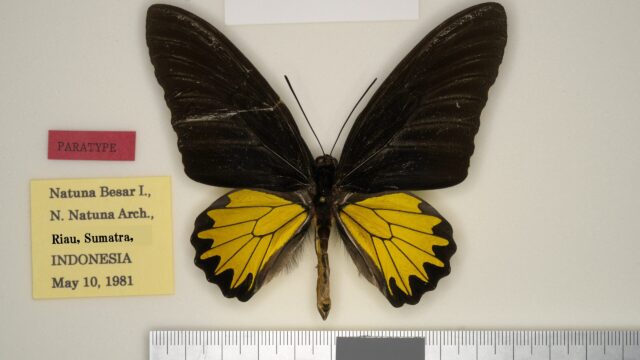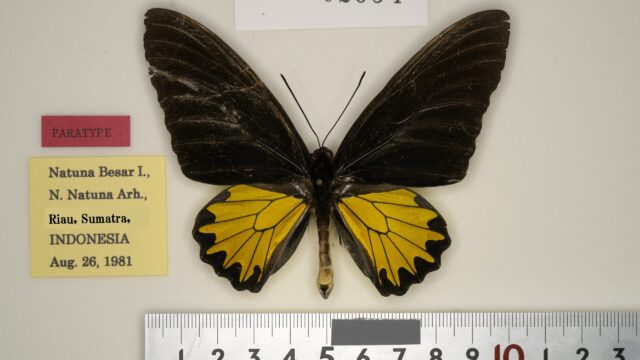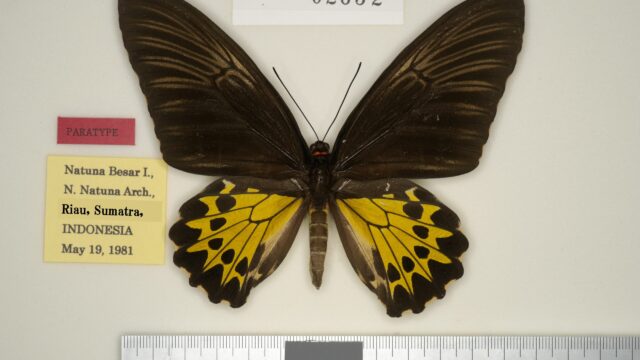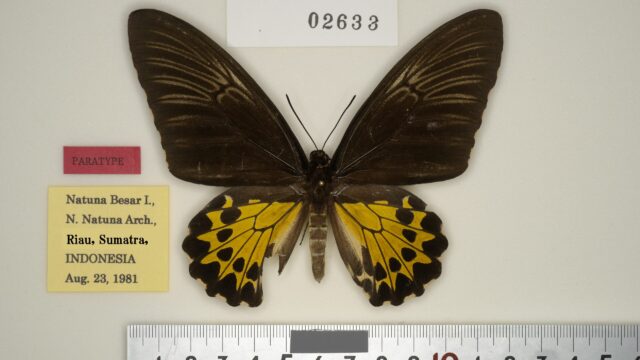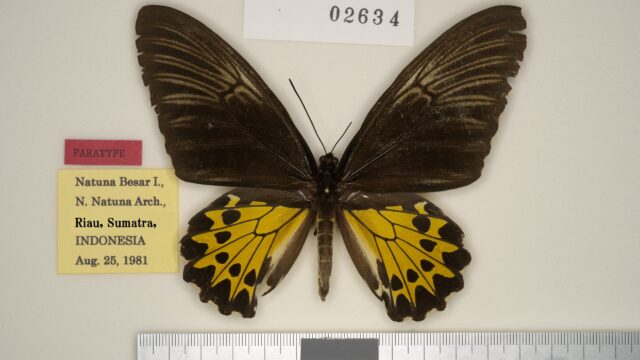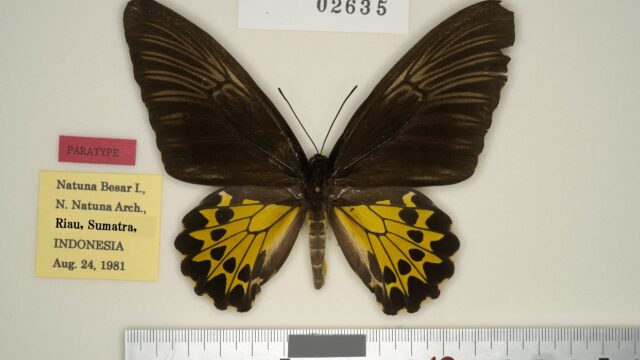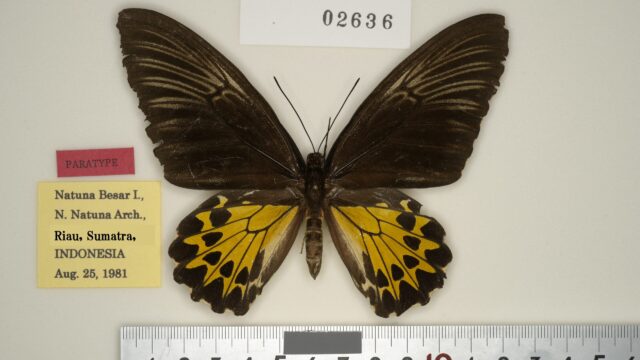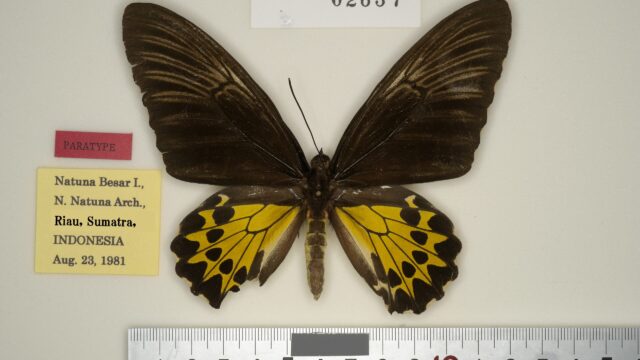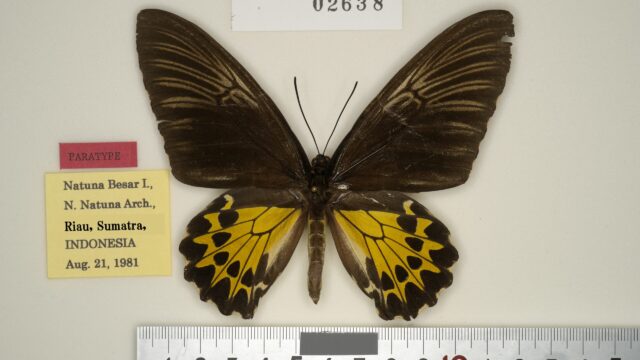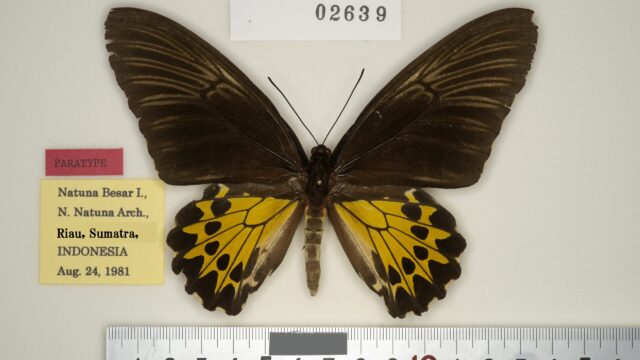19. Ssp. bunguranensis Ohya, 198223) [♂, ♀]
(Distribution) [Map 132]
INDONESIA [Riau Is.] Northern Natuna Islands (Natuna Besar (=Bunguran) Is.)
(Episodes of discovery and original description)
The first description of this species from the Natuna Islands was by Rothschild (1895), who examined a specimen of 1 ♂ and 1 ♀ and assigned it to the subspecies cerberus. Jordan (1908) concurred, but there have been no further reports. D’Abrera (1975) included it in moschylus (sic), although he implied that it might be a new subspecies. Ohya (1982) described it as a new subspecies in the journal Rhopalocerists’ Magazine, vol. 5 (June) (1982), based on ♂ (10 May 1981) and 1♀ (19 May 1981) by Indonesian collectors and 10♂♂ and 9♀♀ collected between 2 and 30 August 1981.
(Characteristics)
Resembles ssp. venus from Southern Natuna Islands and ssp. sugimotoi from Karimata Is., but more stable in spotted pattern and size and larger than both subspecies. It is easily distinguished from other subspecies by the milky white coloration of the 7th abdominal segment.
(Spotted pattern)
♂: FW surface is glossy black, and the undersurface has narrow vein-stripes that reach the cell, which is not seen in subspecies venus and sugimotoi. The semi-translucent golden spot on the subcostal space of HW extends to the outer margin as in ssp. venus. The black marginal border is as broad as subspecies venus and sugimotoi. The upper surface of abdomen is paler than in other subspecies, and 7th abdominal segment is characterized by being completely milky white.
♀: Intermediate form: FW ground color is dark brown, and vein-stripes are dark on both sides. HW subcostal patch contains a small triangular yellow spot with a dark discal spot, which is absent in subspecies venus and sugimotoi. The dark marginal border is broad, but the dark discal spots are small, completely isolated, and slightly unevenly distributed medially. Abdomen is pale and the 7th segment is milky white as in ♂.
